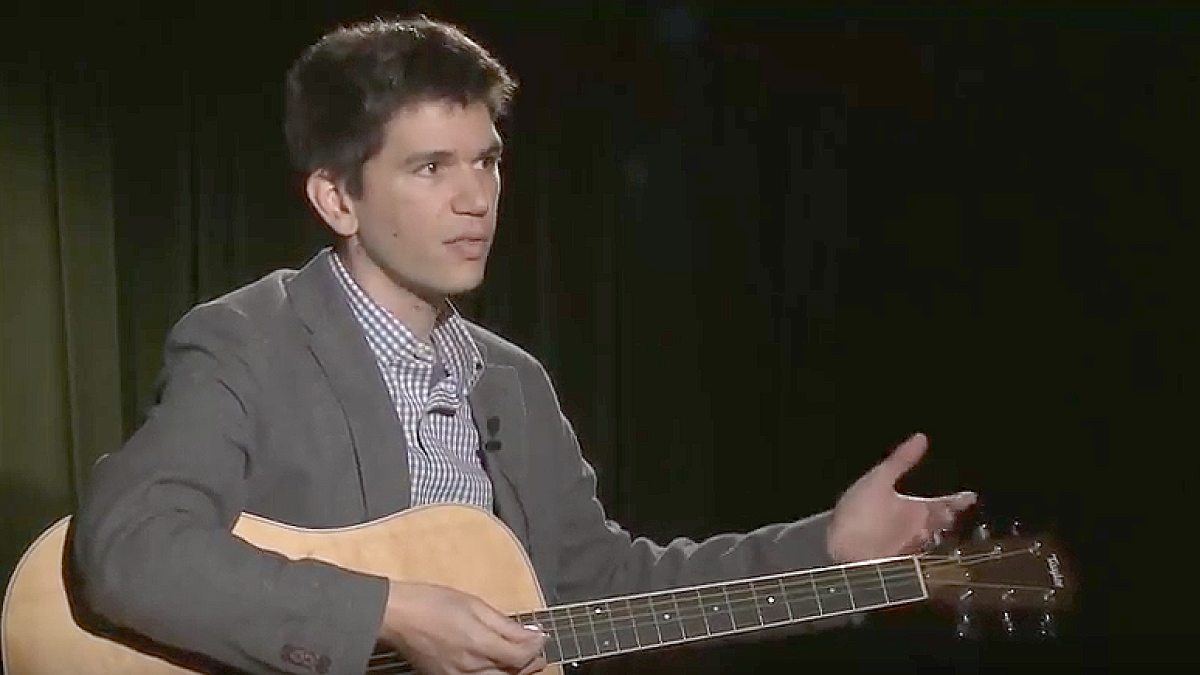The latest “UO Today” interview brings UO professor of music theory Drew Nobile into the studio to discuss his research delving into the form and structure of classic rock music.
He says he became interested in the subject when he was a younger, classically-trained musician who dabbled in playing rock.
“As rock analysis has come into the normal analytical discourse, there has been resistance to talking about things like chord progressions and large-scale melody, things like that,” he said. “I think people don’t think that is how fans tend to listen to music. When I was in grad school I started off doing math stuff, but then I realized that when I was analyzing rock music, certain patterns of the structure were becoming apparent, and people hadn’t been talking about that, I think because of the resistance to that kind of analysis.”
Nobile’s definition of the classic rock era starts with The Beatles’ first studio album in 1963 and goes until, but doesn’t include, the grunge movement in 1991. But his view on what exactly counts as classic rock is much broader, covering most everything that was played on mainstream radio during that era — including Tom Petty, Michael Jackson and Madonna, among others — as long as it fits the style of the music he’s looking at.
His studies are done through the lens of Schenkerian analysis, a method of musical analysis of tonal music based on the theories of Heinrich Schenker.
“Essentially his theory was that all of the music of the composers he considered to be geniuses, all of whom were German, their foreground structures all were in service of some sort of larger and deeper background structure,” Nobile said. “So when we say we engage in ‘Schenkerian analysis,’ what we are talking about is the relationship of the note-to-note melodies and counterpoints and chord progressions to what is going on at a deeper level.”
Essentially, Schenker thought “genius-level” musical works were not simply acoustically pleasant but purposefully structured to make a specific measure, or group of notes, to stand out. In rock music, this approach manifests itself by looking at how the aspects of the music interact with the structure of the song to create a final product.
“People talk about verse-chorus form as if it’s one type of form,” Nobile said. “I actually think it’s three different forms. That has to do with how the chord progression is laid out, but how the chord progression is laid out actually affects a lot of other things, like how the lyrics are laid out, and what is actually going on in the whole piece.”
To watch the whole interview, which involves some guitar-playing by Nobile, visit the “UO Today” YouTube channel.
“UO Today” is a weekly half-hour interview program hosted by Paul Peppis, a UO English professor and director of the Oregon Humanities Center. Each episode features a conversation with UO faculty and administrators, visiting scholars, authors or artists.
It’s produced by the Oregon Humanities Center in collaboration with UO Library’s Center for Media and Educational Technology. An archive of past interviews is available on the Oregon Humanities Center’s website, or on their YouTube channel.
—By Noah Ripley, University Communications


